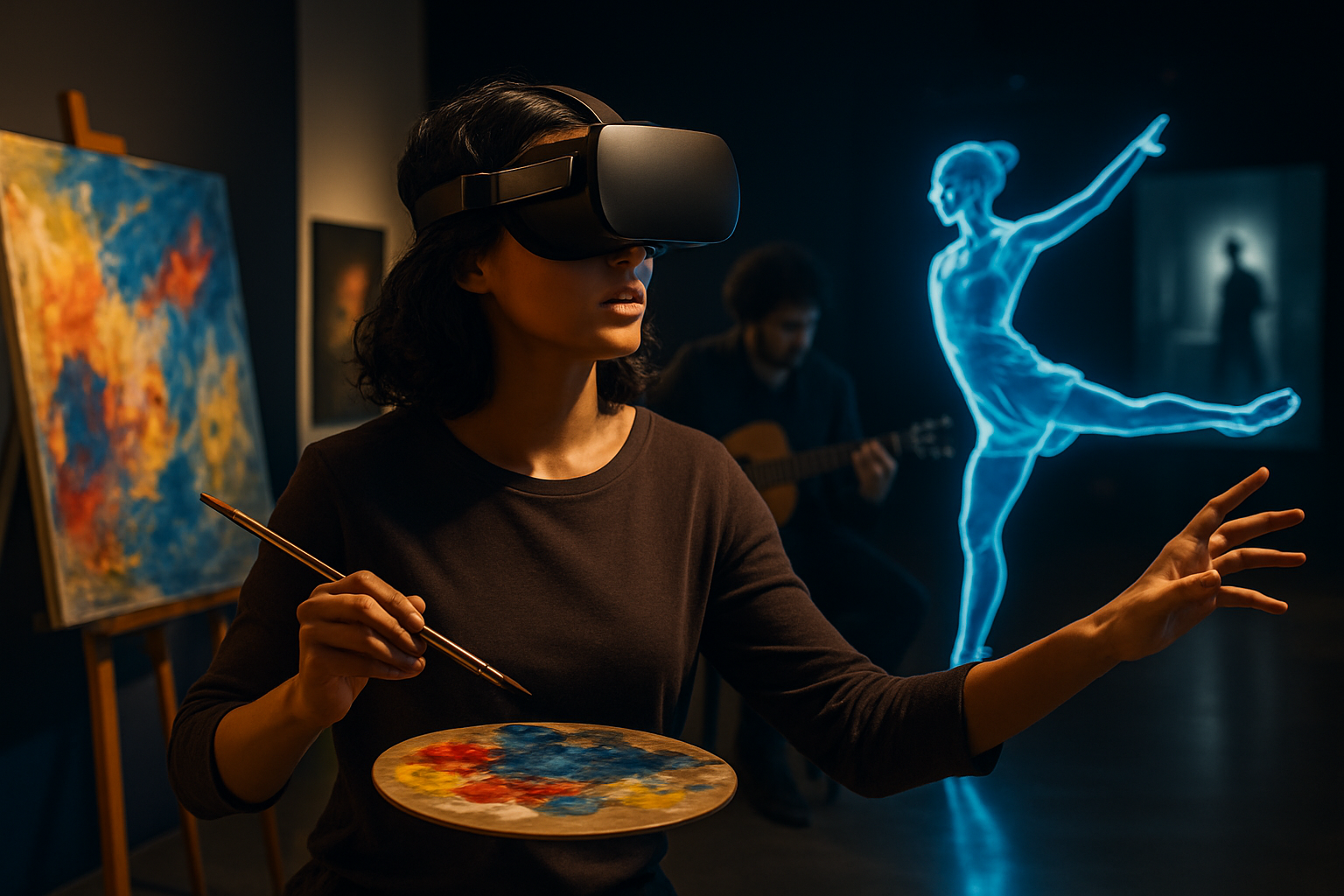Synesthesia in Contemporary Art: Blending Senses
In the dynamic world of contemporary art, a fascinating phenomenon is captivating audiences and challenging traditional perceptions. Synesthesia, a neurological condition where stimulation of one sensory pathway leads to involuntary experiences in another, has become a wellspring of inspiration for artists across various mediums. This exploration of sensory fusion is pushing the boundaries of artistic expression and redefining how we experience art.

Pioneers of Synesthetic Art
While synesthesia has influenced artists for centuries, the contemporary art scene has seen a surge in creators explicitly exploring this sensory interplay. Melissa McCracken, an American painter, translates music into vibrant, abstract compositions, each brushstroke representing a note or chord she perceives in color. Her work offers viewers a glimpse into her unique perceptual world, inviting them to experience music through a visual lens.
Multisensory Installations: Engaging All Senses
The rise of immersive art installations has provided the perfect canvas for synesthetic experiences. Artists like Ryoji Ikeda create large-scale, data-driven environments that bombard visitors with synchronized light, sound, and sometimes even scent. These installations blur the lines between different sensory inputs, challenging viewers to reconsider their perceptual boundaries and explore new ways of experiencing art.
Synesthesia in Digital Art and Virtual Reality
The digital realm has opened up new possibilities for synesthetic art. Virtual reality platforms allow artists to create fully immersive environments where color, sound, and touch intermingle in ways impossible in the physical world. Pioneering VR artists are developing experiences that adapt in real-time to viewers’ physiological responses, creating a feedback loop between the artwork and the observer’s sensory perceptions.
The Impact on Art Therapy and Wellbeing
Beyond its aesthetic appeal, synesthetic art is finding applications in therapeutic settings. Art therapists are exploring how multi-sensory artworks can aid in emotional expression and healing for individuals with sensory processing disorders or trauma. The immersive nature of these works provides a unique way to engage with one’s emotions and experiences, offering new pathways for self-discovery and mental health support.
Challenges and Controversies in Synesthetic Art
As with any emerging artistic movement, synesthetic art faces its share of challenges and criticisms. Some argue that attempts to recreate synesthetic experiences for non-synesthetes are inherently flawed, as they can never truly replicate the involuntary and deeply personal nature of the condition. Others question the authenticity of artists claiming synesthetic inspiration, raising concerns about the commodification of a neurological trait.
The Future of Sensory Fusion in Art
As technology continues to advance and our understanding of sensory perception deepens, the possibilities for synesthetic art seem boundless. From neuro-adaptive installations to artificial intelligence-generated multisensory experiences, the future promises even more innovative ways to blend and challenge our senses through art. This evolving field not only pushes the boundaries of artistic expression but also offers new insights into the nature of human perception and consciousness.





